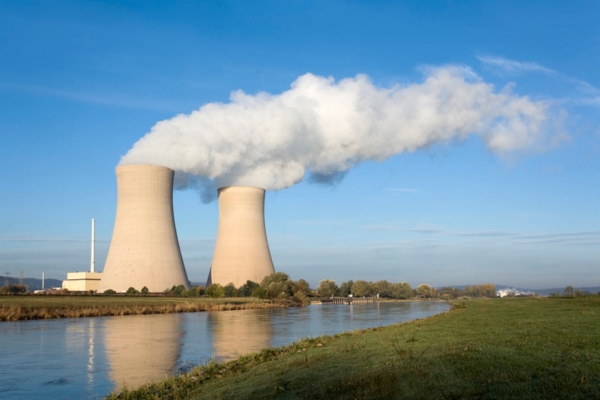Environmentalists and politicians alike hotly debate the usage of nuclear power. While it may be a source of relatively clean energy, it has also gained a reputation for being a catalyst for catastrophic accidents.
Nuclear power plants create energy by breaking uranium atoms into smaller parts. This process, known as nuclear fission, heats up the water surrounding a reactor core and turns it into steam. The rising steam then turns turbines attached to generators, producing electricity.
Despite nuclear fission being relatively more efficient at converting raw materials into energy than burning fossil fuels, it also presents unique operational and practical challenges. Nuclear waste, the leftover material from a used-up reactor core, is radioactive and can cause serious diseases, particularly increasing the risk of developing cancer. In Canada, the popular treatment method is to dispose waste by dunking it in water to reduce the levels of radioactivity and then storing it in facilities around the power plant itself. There is, however, little consensus on what to do with nuclear waste in the long term. While nuclear waste can be repurposed by extracting and reusing its uranium and plutonium, this technique is extremely costly, and both uranium and plutonium are still dangerous materials on their own. The most popular suggestion, and likely the future course of action in Canada, is to bury the radioactive material in geological repositories deep underground; however the long-term effects of this are still under research.
Beyond disposal issues, mining, purifying, and transporting uranium and nuclear fuel can emit pollution. However, nuclear pollution is practically insignificant when compared to the pollution from fossil fuels like coal and natural gas. A 2013 paper from NASA claimed that using nuclear power instead of burning fossil fuels has saved, on average, 64 gigatons of carbon dioxide globally.
Despite the benefits of reduced pollution, accidents in the news have given nuclear power a bad reputation. Chernobyl, Three Mile Island, and Fukushima Daiichi are well-known nuclear power plant disasters, each of which had a different cause. In Chernobyl, inadequately-trained personnel operated a factory with a flawed design. On Three Mile Island, the coolant to stop the reactor core from overheating escaped. In Fukushima Daiichi, a tsunami caused the coolant to malfunction in three different reactors. In response to these tragedies, nuclear power plant safety today has been improved through increased training for employees, better construction materials, and backup coolant systems.
“[Nuclear power is] not that dangerous if you normalize it to the rest of the world,” Jean Barette, a professor in McGill’s Department of Physics, said. “If you normalize the number of car accidents every day, there is no comparison [….The difference is that nuclear] accidents are a mess and it’s expensive [….] A lot more people die from radioactive poisoning from smoke on coal plants than from nuclear reactors.”
The future of nuclear power remains unclear. Researchers are currently looking into how nuclear power can produce hydrogen through electrolysis, the process of splitting water molecules using an electric current to produce hydrogen. Hydrogen presents an environmentally-efficient source of fuel for the future because it emits water vapour, rather than carbon dioxide, during combustion. Presently, natural gas and coal are used to produce hydrogen, but nuclear power plants are the ideal candidate for this job since they create both steam and electricity with little pollution. Sustainable hydrogen production could improve a wealth of other technologies, such as reliable hydrogen-fuel cars. Ultimately, nuclear power might be a better investment than fossil fuels, even if it feels like picking a mild environmental harm over a greater one.








